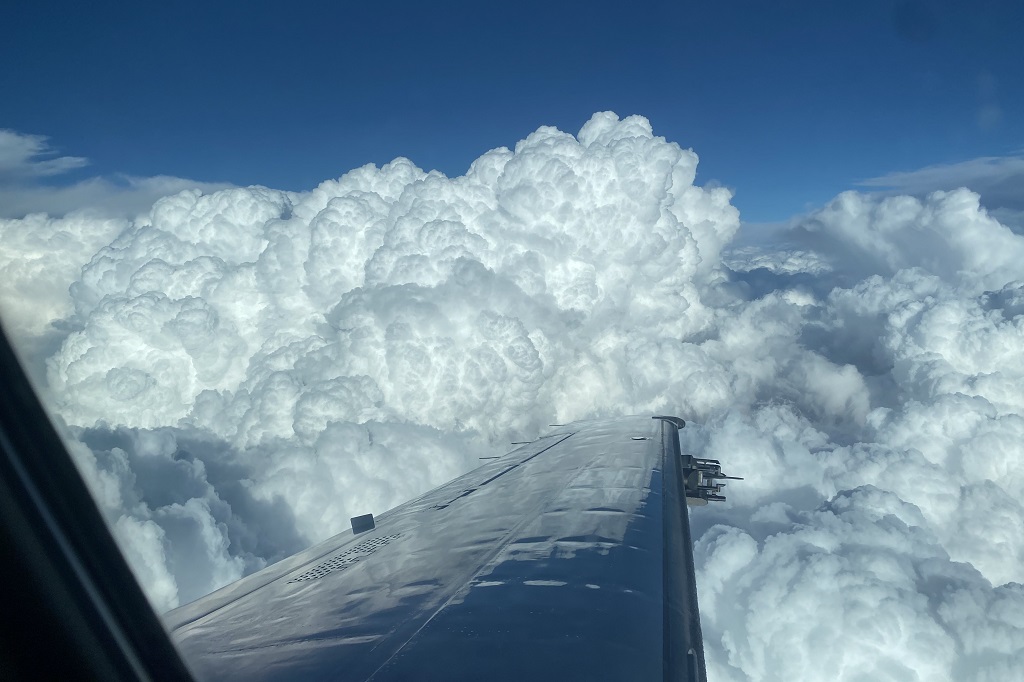Just another day at the (cloud seeding over Saudi Arabia) office
UND Atmospheric Sciences team spends spent six weeks overseas, conducting weather-modification research

By Averie Eixenberger
This past October and November, members of the Department of Atmospheric Sciences at the Odegard School of Aerospace Sciences spent six weeks in Saudi Arabia for a research trip involving weather modification.
This research project was done in collaboration with The National Center for Meteorology in Saudi Arabia. The goal was to observe the differences between seeded and non-seeded clouds to show the effects of the seeding agent used in weather modification.
“Our overall goal was to study developing convective clouds,” said Lynnlee Rosolino, a UND graduate student. “We looked at the environment in which the clouds develop, including temperature, dewpoint and pressure, among other things; but we focused mostly on the microphysics within the clouds. The cloud droplets’ shape and size, the concentration of droplets and the state of the droplets are some of the things our instruments can measure that help us better understand the storm.”
Cloud seeding is used to change the type or amount of precipitation that falls from a storm. This type of weather modification involves aircraft flying into clouds to disperse the agent responsible for changing the precipitation.
“It was eye-opening to see the way different countries go about their research,” Rosolino said. “It was also interesting to experience a different culture from a scientific perspective, rather than as a tourist. You get to see a completely different side of the country.”
The trip involved UND faculty members David Delene, research professor of Atmospheric Sciences, and Marwa Majdi, research assistant professor of Atmospheric Sciences, as well as Atmospheric Sciences staff member Andrea Neumann-Skow and graduate students Rosolino and and Michael Willette. The team spent weeks gathering data from in-cloud observations at different temperatures.
“I loved being in the plane flying through the clouds,” said Rosolino. “It’s really cool being able to experience weather from inside the storm as it’s developing.”
The data collected by the team will continue to be analyzed by the UND Atmospheric Sciences department and the Saudi Arabian National Center for Meteorology. The goal is to verify the effectiveness of cloud seeding on the weather.
“We had a lot of fun,” said Rosolino. “We got to joke around and laugh while flying between the clouds. Then we turn on the science brain and learn a lot while gaining work experience in the field.”
 About the author:
About the author:
Averie Eixenberger is a Commercial Aviation and English major at UND. After graduation, she hopes to pursue a career as an airline pilot and work within aviation journalism.


